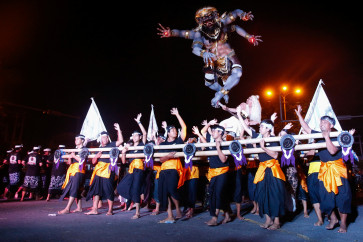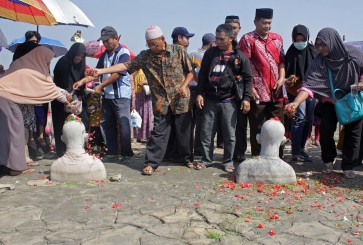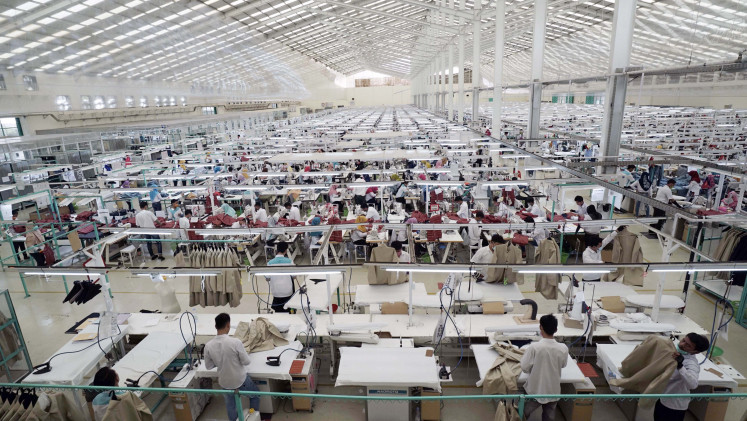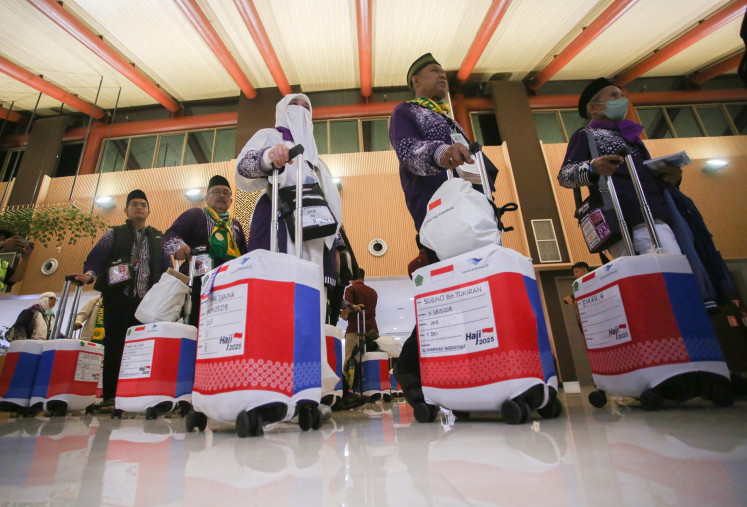Arak Bali’s fight for recognition
Change text size
Gift Premium Articles
to Anyone
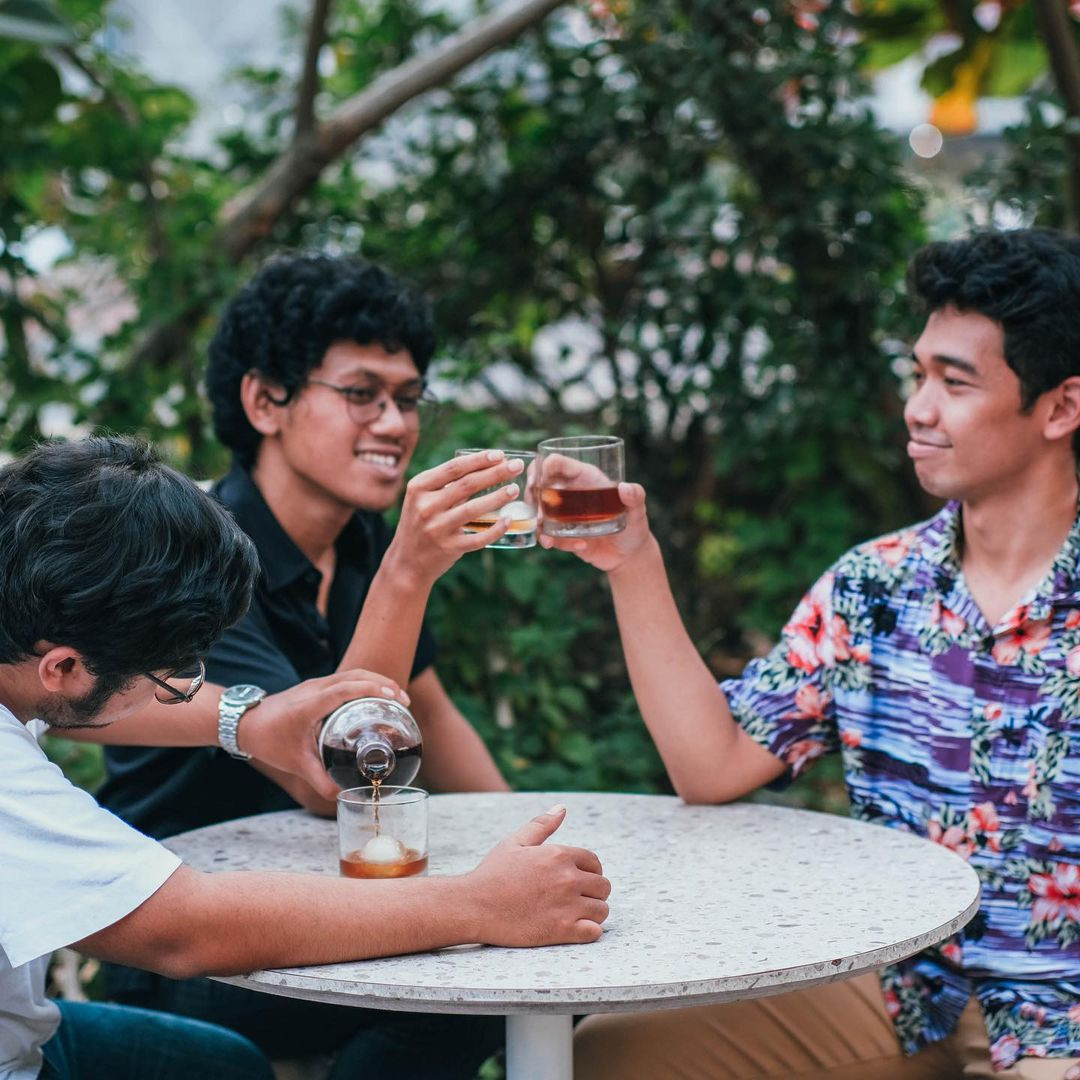
I
n the past two years, arak Bali has grown from a drink with a sinister reputation to an acclaimed product gifted to foreign dignitaries. What’s the story?
On most days, you will find Ida Ayu Puspa Eny receiving an unending barrage of guests at her cozy Denpasar home. Should you catch her on a good day, the retired journalist will hand you a glass and direct you to her living room.
Instead of comfortable chairs, you will find rows upon rows of glass dispensers filled with multicolored stashes of steeped, blended arak—a Balinese liquor and a specialty of hers. Take a sip of each one, and prepare for liftoff.
“This is something familiar to all Balinese,” Bu Dayu said, as she’s often called. “We’re carrying on our ancestors’ legacy.”
Things are picking up for Dayu, and she is enjoying the ride. Her steeped arak brand, Iwak Arumery, has risen from a homemade liquor enjoyed by close friends and neighbors to a glossily packaged brand gifted to foreign dignitaries at Group of 20 meetings.
The Arak Bali Cooperative’s Association, of which she’s the head, counts among its members 10,000 arak makers from Bali alone, producing 2 million liters of the heady liquor each year. And she predicts the membership will continue to rise.
Dayu is not the only arak maker enjoying a well-deserved summer. Over the past two years, the Balinese arak scene has shifted from an underground market with a fatal reputation into a growing ecosystem of internationally acclaimed artisans.
It is partly a story of successful, if incomplete, government experimentation. But mostly, it is a story of a lifetime of creativity and heritage, finally unshackled from the boundaries of conventional morality.
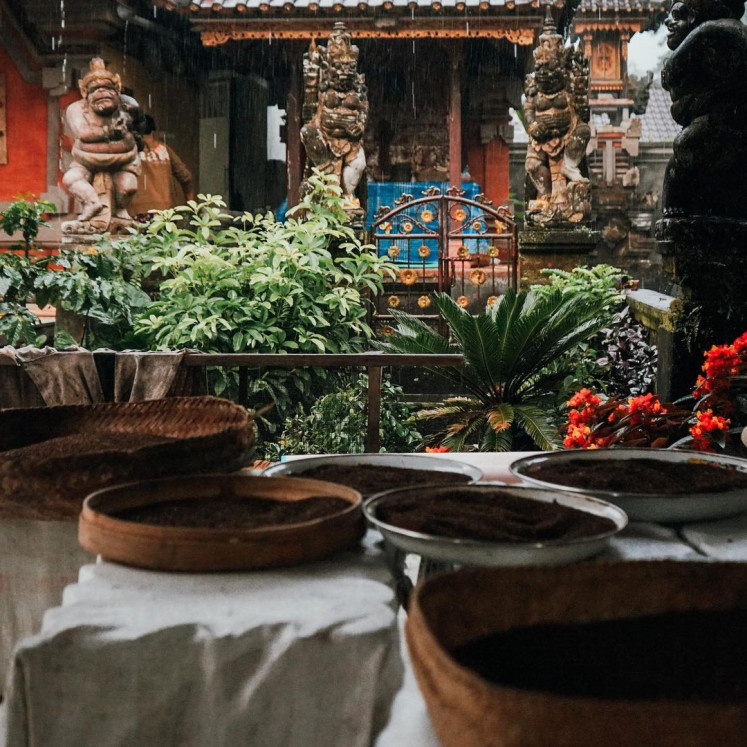
Unexpected breakthrough
Despite its ubiquitous presence at Balinese streetside stalls and religious ceremonies, the government and the moral majority alike have never known what to do with arak. Incidents of public intoxication, alcohol poisoning and even deaths due to improperly prepared arak garnered a sinister reputation – especially among Bali’s tourists.
“The truth was, it’s not the fault of the arak itself,” Dayu explained. “But drinkers, especially young people, liked to experiment and mix the arak with things that should not be mixed with alcohol.”
In 2014, the central government ratified Presidential Decree No. 39/2014, which placed alcoholic drinks like arak on the Negative Investment List—essentially banning foreign investment in the nation’s already flagging liquor industry. Though some welcome this as an attempt at limiting alcohol consumption’s more insidious effects on public order, in regions with a long cultural history of alcohol consumption, pockets of resistance remain.
A cottage industry of arak makers persisted in Bali, prioritizing survival over quality control. “The police constantly hound arak makers, so the mentality was to get this batch of arak done and sell it as quickly as possible, with no regard for quality,” said Harry Nazarudin, founder of culinary connoisseur group Fermentasi Nusantara.
“It’s a short-term business without sustainability. So the reputation of arak Bali as a poor-quality product started.”
The breakthrough came in 2020 when the Balinese provincial government announced the Governor’s Decree No. 1/2020 – a ruling that essentially provides a legal framework for distilling and distributing arak. More importantly, it forced independent arak makers and farmers to market their products through a cooperative, which partners up with selected factories to mass-produce, bottle and package the liquor.
“Arak makers used to compete with one another. But with this new ruling, they’re forced to work together in cooperatives,” Harry continued. “This means there’s finally a platform for them to share knowledge, to develop their product together and to think of a sustainable future for them all.”
In short, these independent and often-bickering fiefdoms have merged into a thriving, if slightly uneasy, ecosystem. “The mentality gradually shifted,” Harry said. “Arak makers began to take their product’s quality more seriously because now they have an incentive to build a long-term, sustainable business.”
As the ruling provides a safety net for arak makers, innovations have begun to pop up. Long renowned for its sharp, unmistakable flavor, newer arak artisans have experimented by steeping arak in spices, fruits and coffee—creating unique blends and expanding the drink’s palatability. One such brand is Arakbica, a popular coffee-steeped arak produced by Twalen Spirit.
“When we started in 2020, we were still technically flying under the radar,” said Wena Wahyudi, Twalen Spirit’s founder. “So we introduced it to friends and kept it out of social media and e-commerce platforms. Arak Bali has a bad reputation, so our main concern was building that trust gradually.”
Their product caught the eye of popular Jakarta-based artspace M-Bloc, and Arakbica was sold in a small kiosk. The results were beyond anybody’s wildest dreams. Despite arak’s grim reputation and a relatively high price tag of Rp450,000 (US$29) per bottle, Twalen sold over 1,800 bottles of Arakbica between its launch in March 2021 and November 2021.
“That proved to us that, at least domestically, this drink has its market,” Wena affirmed.
Encouraged by the drink’s popularity and Bali’s well-run decree, Twalen Spirit started the process of “legalization.” They approached factories and farmers alike to ensure their product retained its quality, partnered with investors to kickstart their new era, and submitted their product for lab testing at the National Food and Drug Agency (BPOM) within 90 days. The entire process, Wena said, took them four months.
In March they released Arakbica to a broader market. The response was predictably wild. “By June 2022, we sold an additional 2,500 bottles,” Wena said proudly.
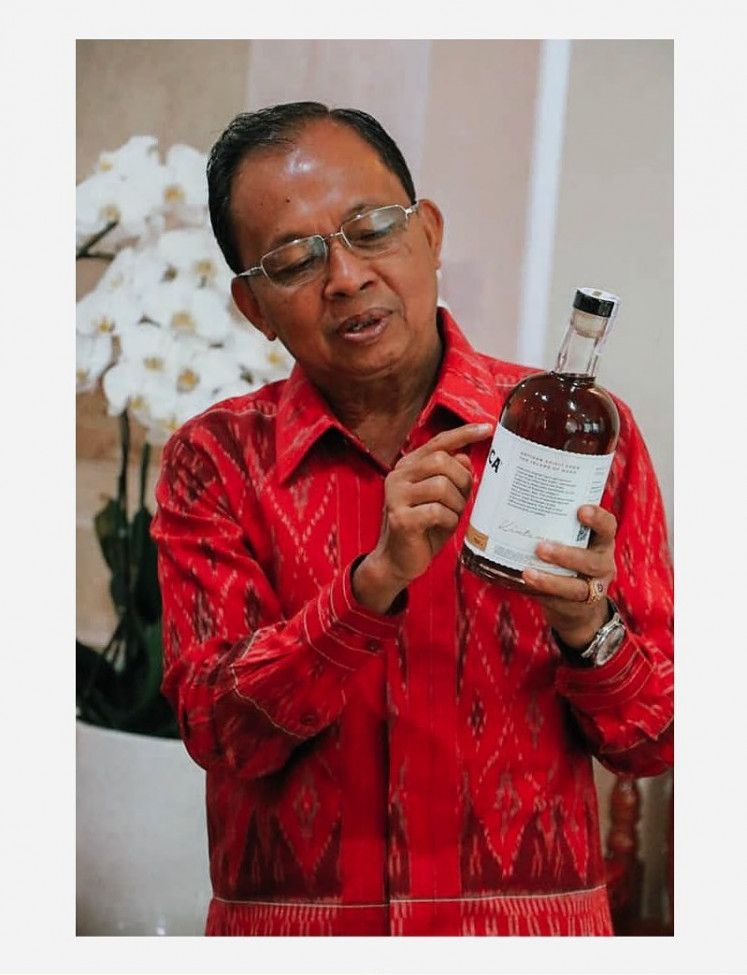
A hindered expansion
Despite the positive strides of brands like Arakbica and Iwak Arumery, arak still finds a rocky road ahead to reach its long-intended destination: international expansion.
“Palm-based liquor is still unpopular in international markets,” opined Nathan Santoso, founder of Radjoetasa, an incubator for small businesses. “Agave-based liquor such as tequila and molasses-based liquor like rum are already part of the international conversation, but beyond Southeast Asia, palm-based liquor is still unfamiliar territory.”
This is because liquors like arak Bali, according to Nathan, have spent too long in the shadows as a cottage industry. “Coffee rose in value and perception because there was a generation of baristas and connoisseurs who educated the public on preparing and enjoying it properly,” Nathan continued.
“The same process hasn’t happened with arak. It’s not a quality product that can stand on its own.”
Part of the problem was that the Balinese governmental decree, though a great start, was still fundamentally incomplete. It was a decree designed to make and distribute products to the masses, not to create an artisanal product with an emphasis on quality and story.
“The ruling gives space for arak farmers and factories, but not for artisans and master blenders,” Dayu said. “According to the ruling, any mixing and recipe development is then done in these factories. So if I want to contribute to that process, I have to be an employee of that factory.”
This formal arrangement hinders creativity and innovation. “When you get to factories, they’re already counting costs, and this is already a fragile, fledgling industry,” Dayu continued.
“These factories are not going to risk too much money to put into research and development. They don’t have the sense for that because that’s not their priority. But for master blenders like me, creativity is the main goal.”
Doubts also remain over these factories’ competence and capacity, even their provenance. “Because of our national policies, you don’t get new permits to build liquor factories, so everybody has to work with existing factories,” Nathan sighed.
“But these permits were handed out to them long ago based on privileges and past ties, not necessarily on competence. So these factories might not have the ability to scale up.”
This disconnect between the willingness to expand the regional liquor industry with the state’s rigidity over liquor means foreign investors are still hesitant to participate in the new gold rush. “There’s technically a bridge, but it’s shaky,” Nathan said. “So even though the bridge is there, nobody wants to cross over. Nobody feels safe.”
Slowly, though, the tide appears to be turning. Arakbica and Iwak Arumery, perhaps the vanguard of arak Bali’s growing mainstream acceptance, have made appearances in gift baskets handed out to foreign diplomats at G20 meetings. Wena revealed that his company was in tentative talks with “multiple ministries” to facilitate their product’s appearance in airport gift shops, hotel chain minibars and even large-scale shopping malls.
For Wena, the key has been emphasizing arak Bali’s cultural legacy.
“As a Balinese, arak reflects our cultural philosophy of tri hita karana—our relationship with others, nature and God,” Wena explained.
“Its presence in religious ceremonies is non-negotiable; its ingredients are all organic, which means we have to sustain nature to continue making it, and it’s a symbol of brotherhood and economic empowerment for many.”
With this narrative, Wena is confident the gospel of arak will continue to expand. “This is culture, not intoxication,” he concluded.

